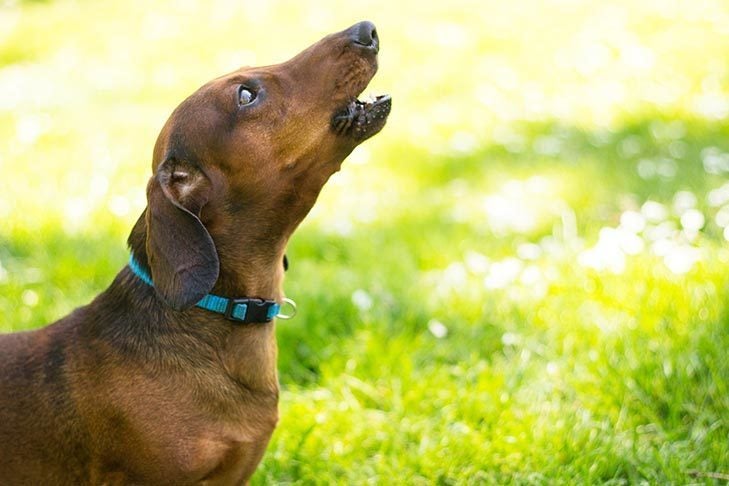Clubs Offering:
|
So often, we hear that a dog just bit someone “out of nowhere.” The truth is, dogs rarely bite with no warning.
Dogs primarily communicate using body language, so it’s important for humans to understand what they are trying to tell us. Learning our dogs’ special ways of communication can reduce their anxiety and prevent potentially dangerous situations from happening. There are several warning signs to look for to help tell if your dog is stressed.
Growling is an obvious way to tell if your dog is uncomfortable. It could mean that someone is in their space, they feel threatened, or that something hurts. It’s not usually meant to be aggressive but it is rather often a warning that your dog feels uncomfortable.
Many people try to discourage their dog from growling. But if a dog gets in trouble for it, they may become more likely to skip future warnings and go straight to a bite. Don’t punish your pup for growling. Instead, respect their space or figure out a different way to get what you want from them. For example, if a dog is growling over food, give them space when they eat in peace. If they are growling over a bone and you need to put the bone away, trade them for a smaller treat so you can take the bone away safely.
Many dogs cannot control their whining when they feel stressed, as it’s more of an automatic response. However, it is a clue for humans that something in the environment is causing anxiety. Barking is similar, in that pups can’t always control it, but they’re trying to tell you that they’re stressed about something. It may, however, depend on the context, as dogs may whine and bark for many other reasons.

There are entire books written on dog body language and “calming signals,” a term developed by Norwegian dog trainer Turid Rugaas. Rugaas realized that dogs have more than 30 ways to avoid stressful situations and try to calm themselves. When pups exhibit these behaviors, they’re trying to diffuse the situation or tell you or another dog that they aren’t a threat.
Stress signs to look for include whale eye (when dogs reveal the whites of their eyes), tucked ears, tucked tail, raised hackles, lip-licking, yawning, and panting. Your dog might also avoid eye contact or look away. This is most commonly seen in a dog that seems “guilty.” However, the pup is actually reacting to your voice and body language and thinks something must be wrong.
Don’t rely solely on body language. Also, some dogs raise their hackles when they are overstimulated or excited, not necessarily when they are stressed or anxious.
When your dog freezes or gets stiff, they are often stressed about something they see. In a training context, this can sometimes be seen as “submission,” but modern dog training practices tell us that the dog is actually shutting down. This can be very dangerous for both you and your pup. It’s a warning sign that the dog is so stressed that they can’t handle the situation, and the next step may be a bite.
When canines are pacing back and forth, it’s a sign they can’t settle down because something is stressing them. If this happens during mealtimes or for short periods, it might not be a big deal. But, noticing when your dog engages in this behavior can give you clues as to what is triggering their anxiety.
In older dogs, pacing may be a sign of dementia. If you start to notice this in your senior pet, talk to your veterinarian right away.

Note: With all of these signs, it all still depends on the individual dog and the context of the situation. For example, some dogs growl or “talk” while playing. It could mean they are getting overexcited and need a break, but it could also just be the way they play. Getting to know when your dog is stressed is key. You should always talk to a professional dog trainer if you have any concerns. Or, consider a trip to your veterinarian if your dog’s behavior changes suddenly.
Find food that fits your pet’s needs
Youre probably all too familiar with your own responses to stress. And you can probably tell when your closest friends or family members are feeling anxious, too. But what are the signs of a stressed-out dog?
As their pet parent, you are your dogs best ally when it comes to defeating stress, so its important to be able to identify when theyre stressed and to know how to help them relax.
Heres everything you need to know to understand, identify and relieve dog stress.
Your dog can feel stressed for a number of reasons. According to the American Kennel Club,the three most common causes of anxiety in dogs:
Additionally, recent studies indicate that your own emotional health and stress levels could impact your dogs stress. According to research published in Scientific Reports, “dogs, to a great extent, mirror the stress level of their owners.”
How to Help an Anxious Dog
Here are some tips you can use to help your dog avoid or react to stress.
The most important treatment for stress and anxiety in dogs is limiting the exposure to stressful situations. Avoid interactions that may cause an anxious response.
For example, in cases of separation anxiety, set up a calm, quiet space with safe toys and items that smell familiar. Start training your dog by leaving them for very short periods of time.
Every time you return, praise your dog, and perhaps give them a small, healthy treat. Through repetition and slowly increasing the length of time that you are gone, your dog will learn that you will always return, and their stress will start to fade.
If your dog is stressed by having new people in their environment, keep them confined in a calm area of the house when new people are there to avoid a fear-induced interaction.
10 SIGNS of STRESS in DOGS How to Help With Anxiety
Sometimes referred to as separation anxiety, some dogs can find being left on their own an overwhelming and stressful experience.
Separation-related behaviours can occur for several reasons and in order to successfully solve it, we must first understand what’s causing it.
Check out our video for to see our tips on how to help keep your dog relaxed when you’re not at home.
For some dogs, separation-related behaviours are simply a product of boredom due to lack of appropriate physical and mental stimulation. Whereas for other dogs, separation-related behaviours and anxiety are much deeper rooted. When a dog is emotionally attached to someone and that person goes away, it can cause fear, frustration, and anxiety. Over time, your dog might even start to anticipate the behaviour and the changes to their environment that lead up to that person leaving and may start showing their anxious behaviours before it happens.
Understanding the root cause of the problem and why your dog is reacting in this way will allow you to implement the right kind of training that will improve their behaviour in the long term and not just straight away.
It’s important to remember that each dog is an individual and will progress through training at different rates. Always aim to ensure you are working within your dog’s limits and that you are keeping a close eye on their stress levels. Recognising signs of stress and knowing how to manage stress levels is key in making sure that your dog is happy.
There are a number of signs that may show that your dog is stressed, which include: